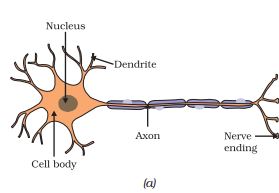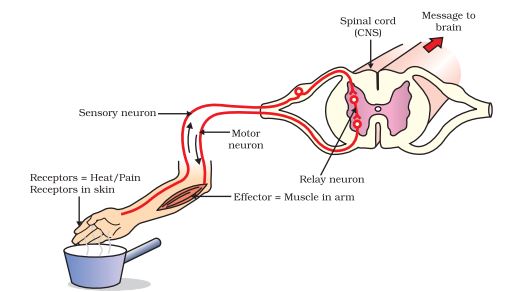Control and Coordination Class 10 Notes
Class 10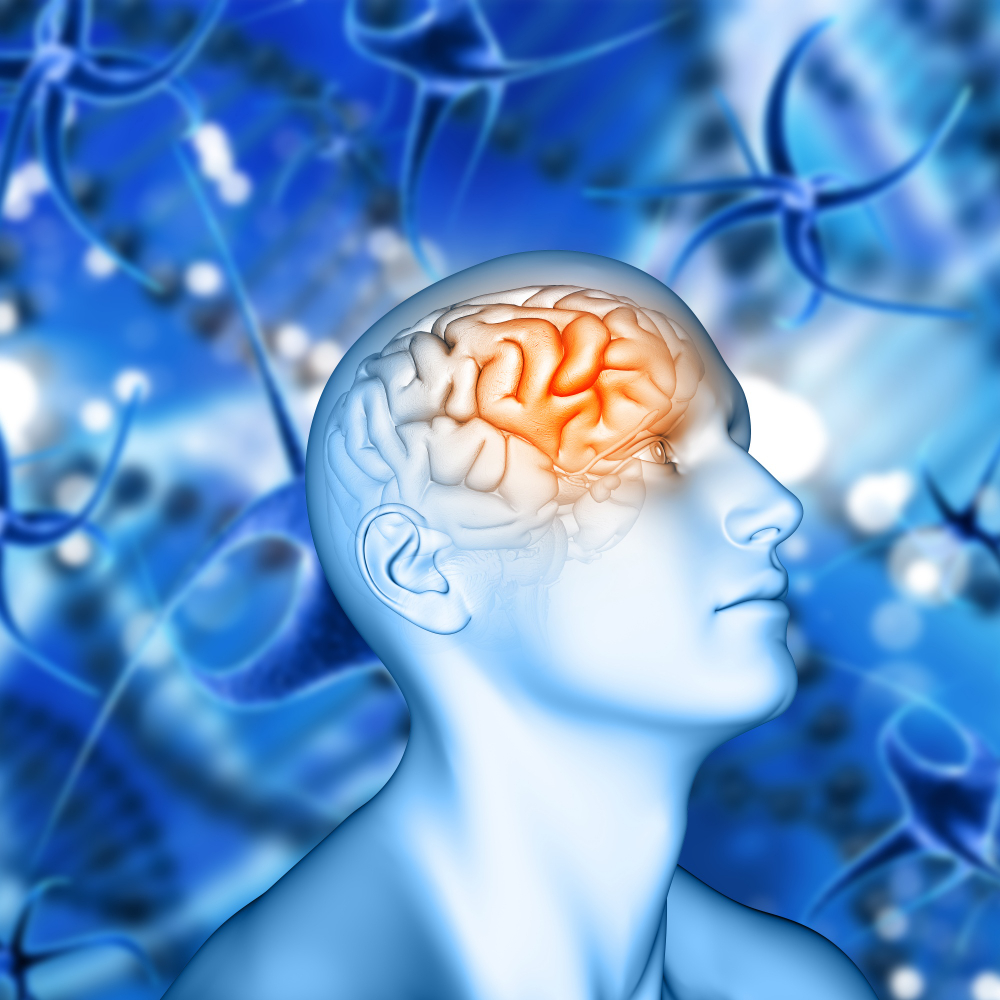
Control and coordination notes class 10 explains the vital processes in living organisms, including humans. As a Class 10 student, it is important to have a strong understanding of these processes as they are key topics in your science curriculum. In these notes, we will explore the different systems responsible for controlling and coordinating various functions in the human body, including the nervous system and the endocrine system. We will also delve into the various reflexes that occur in response to different stimuli and learn about the different types of hormones and their functions. By the end of these notes, you will have a comprehensive understanding of control and coordination in living organisms, laying the foundation for further studies in biology and related fields.
The Nervous System- Control and Coordination Class 10 Notes
Movement in organisms
- Movement is the ability of organisms to move certain body parts.
- When organisms move from one place to another, they engage in locomotion.
- Organisms respond to stimuli by showing movements.
Introduction to control & coordination
- Organisms respond to various kinds of stimuli like light, heat, nutrients/food, by moving.
- The nervous and endocrine systems control and coordinate all activities in animals.
- Endocrine glands secrete hormones, which are chemical messengers that assist the nervous system in carrying out various functions.
- Hormones in plants coordinate their movements.
The neuron serves as the nervous system's structural and functional unit.
The neuron comprises three primary components: dendrites, cyton/soma/cell body, and axon. Other neurons send impulses to the dendrites, and the cyton/soma processes the impulse. The axon transmits the impulse to either another neuron or muscles/glands. Axons can be either myelinated or non-myelinated, with myelinated neurons transmitting impulses more rapidly.
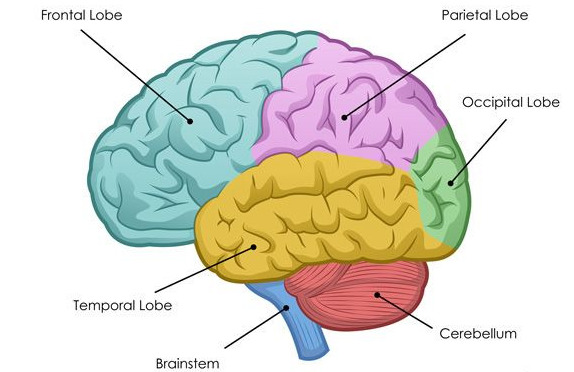
Peripheral nervous system
- The nerves coming out from the brain and the spinal cord constitute the peripheral nervous system (PNS).
- There are 12 cranial nerves and 31 spinal nerves in humans.
Somatic nervous system
- It forms a part of the PNS.
- The nerves of PNS that control the voluntary actions of the body form the somatic nervous system.
Autonomic nervous system
The autonomic nervous system is a part of the peripheral nervous system (PNS) that controls the body's involuntary actions, such as breathing, heart rate, blood pressure, and digestion.
The autonomic nervous system has two divisions: the sympathetic and parasympathetic nervous system.
The sympathetic nervous system prepares the body for intense physical activity and is also known as the fight-or-flight response.
In contrast, the parasympathetic nervous system has the opposite effect and relaxes the body while inhibiting or slowing down many high-energy functions.
Reflex action -Class 10 Control and Coordination Notes
Reflex actions are usually triggered by sensory neurons, which detect a stimulus and send a message to the spinal cord. The spinal cord then processes the message and sends a response through motor neurons, which activate the muscles that carry out the reflex action.
For example, if you accidentally touch a hot stove, your sensory neurons will detect the heat and send a message to your spinal cord. The spinal cord will then send a message through motor neurons, which will cause your muscles to contract and withdraw your hand from the hot stove.
Reflex Arc
Protection of CNS
The brain is protected by 3 main layers –
- The bony skull (cranium)
- The cerebrospinal fluid
- The meninges (Dura mater, Arachnoid and Pia mater).
Plant Hormones and Movements- Control and Coordination Notes
Plant hormones
Control and coordination in plants are carried out by hormones.
| Plant Hormone | Function |
| Auxin | Helps in Growth of Plant Tissue |
| Cytokinin | Promotes Cell division, delays ageing of cells |
| Gibberellins | Helps in the growth of stems, initiates seed germination, promotes flowering, cell division and seed growth after germination |
| Abscisic acid | Inhibits growth and causes wilting of leaves, promotes dormancy of buds and seeds |
| Ethylene | This is a gaseous hormone which causes the ripening of fruits |
Growth independent movements
Nastic movements are the movements that are not related to growth. They occur in response to environmental stimuli, but the direction of response is not dependent on the direction of the stimulus.
The touch-me-not plant exhibits thigmonastic movement, which is a movement in response to touch.
Examples:
- Phototropic movement (light-dependent)
- Geotropic movement (gravity-dependent)
- Chemotropic movement (chemical-dependent)
- Hydrotropic movement (water-dependent)
- Thigmotropic movement (touch dependent)
Geotropism
Geotropism or Gravitropism is the movement of plant parts in response to the Earth's gravitational force.
Positive geotropism occurs when the plant part grows towards gravity, and negative geotropism occurs when the plant part grows away from gravity.
In the case of the root, it exhibits positive geotropism, and it grows towards gravity. On the other hand, the shoot exhibits negative geotropism, and it grows away from gravity.
Phototropism
Phototropism is the movement of plant parts in response to light.
Positive phototropism occurs when the plant part moves towards light, while negative phototropism occurs when the plant part moves away from light.
Stems exhibit positive phototropism, and they move towards light, while roots exhibit negative phototropism and move away from light.
Hydrotropism
Plants exhibit hydrotropism, which is the movement of plant parts in response to water or moisture.
Positive hydrotropism occurs when the plant part moves towards water, while negative hydrotropism occurs when the plant part moves away from water.
Roots exhibit positive hydrotropism and move towards water. For example, the roots of a plant will move towards an area of high humidity level in search of water.
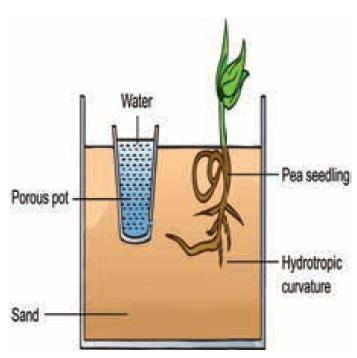
Chemotropism
Plants exhibit chemotropism, which is the movement of plant parts in response to chemical stimuli.
Positive chemotropism occurs when the plant part moves towards a chemical, while negative chemotropism occurs when the plant part moves away from a chemical.
A specific example of positive chemotropism is the growth of a pollen tube towards the ovule.
Thigmotropism
Plants exhibit thigmotropism, which is the movement of plant parts in response to touch.
Positive thigmotropism occurs when the plant part moves towards touch, while negative thigmotropism occurs when the plant part moves away from touch.
A specific example of positive thigmotropism is the movement of tendrils around a support.
The Endocrine System-Control and Coordination Notes Class 10
Exocrine glands
Exocrine glands are glands that discharge secretions by means of ducts, which open onto an epithelial surface.
Endocrine glands
The human body contains several endocrine glands that secrete hormones into the bloodstream.
Endocrine glands do not have ducts, and they secrete hormones directly into the bloodstream.
Some of the endocrine glands found in the human body include the pituitary gland, thyroid gland, adrenal gland, pineal gland, pancreas, ovaries (in females), and testes (in males).
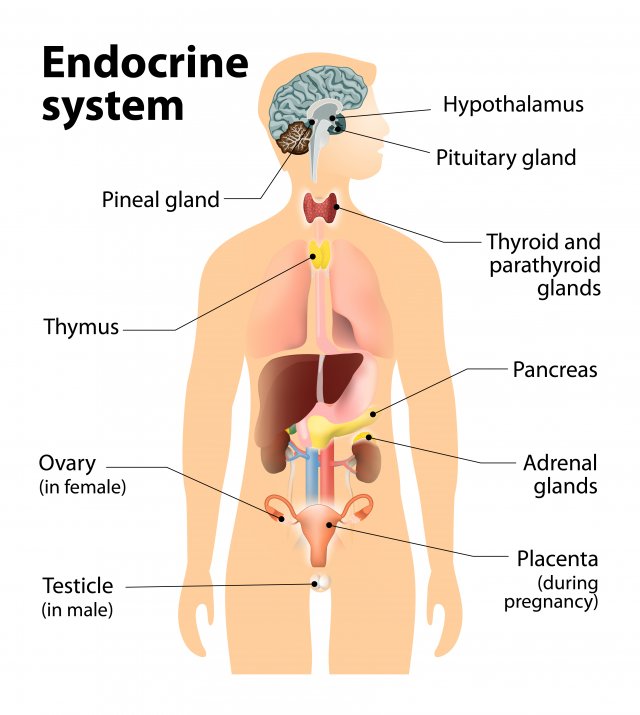
Pituitary gland
- The pituitary gland is located at the base of the brain and is about the size of a pea.
- It acts as the master gland and regulates the secretions of all other endocrine glands in the body.
- The pituitary gland also secretes Growth Hormone (GH).
- Insufficient secretion of GH in children results in Dwarfism, while excessive secretion causes Gigantism.
- In adults, over-secretion of GH leads to a condition called Acromegaly.
Thyroid gland
- The thyroid gland is located in the throat and has a butterfly shape.
- It produces the hormone called "Thyroxine" that helps in regulating the metabolism of the body.
- Iodine is essential for the synthesis of thyroxine hormone.
- If there is a lack of iodine in the body, it can lead to under-secretion of thyroxine and cause goitre.
Pancreas
- A leaf-like gland is present behind the stomach in the abdomen.
- It functions as both an endocrine and exocrine gland.
- It produces two hormones, insulin and glucagon, to regulate blood sugar levels.
- Insulin and glucagon act in opposition to each other.
- The pancreas also secretes enzymes to break down food molecules.
- Insufficient insulin production can lead to diabetes.
Adrenal gland
- The adrenal glands are present in pairs above each kidney.
- They tend to decrease in size with age.
- The adrenal glands secrete the hormone adrenaline which helps in the body's flight and fight response.
- Along with adrenaline, the adrenal glands also secrete noradrenaline.
Gonads
- Gonads are organs that produce gametes, such as testes in males and ovaries in females.
- Testes produce testosterone, while ovaries produce oestrogen and progesterone.
- Testosterone and oestrogen are responsible for sexual characteristics in males and females and help produce gametes.
- Progesterone is known as the pregnancy hormone.
Other endocrine organs
- The other endocrine organs include the hypothalamus, parathyroid, pineal and thymus glands.
Conclusion
In conclusion, the topic of Control and Coordination Notes Class 10 provides a fundamental understanding of how the nervous and endocrine systems work together to regulate the various functions of the human body. The notes explain the types of receptors, reflex actions, and different types of movements in plants. They also outline the various endocrine glands, the hormones they produce, and their respective functions. The notes on Control and Coordination Notes Class 10 are essential for students to understand the complex processes that occur within the body and how they are regulated. With a clear understanding of these concepts, students can appreciate the intricacy and beauty of the human body's mechanisms.
Click here to get exam-ready with eSaral
For making your preparation journey smoother of JEE, NEET and Class 8 to 10, grab our app now.

